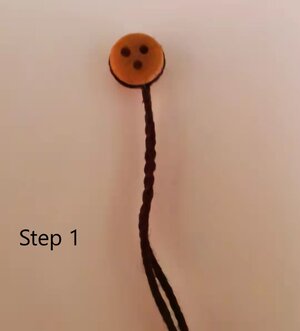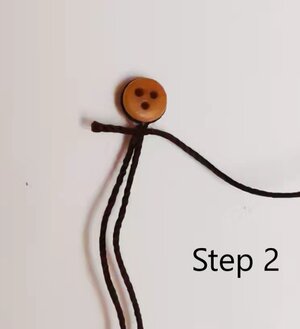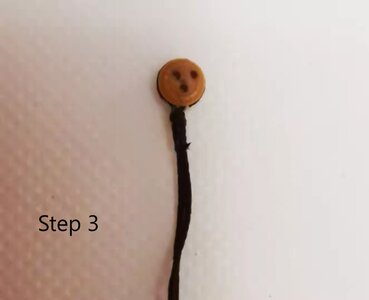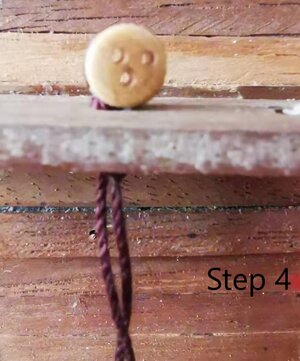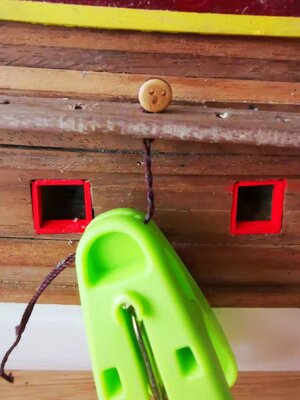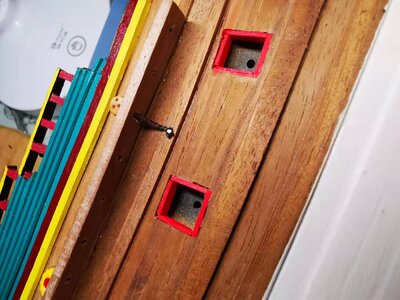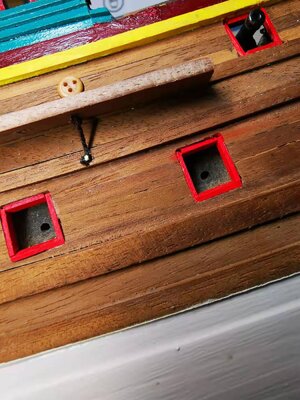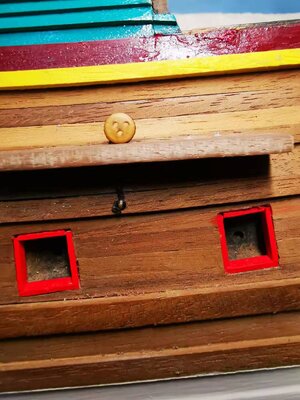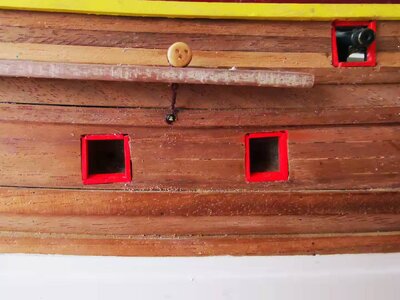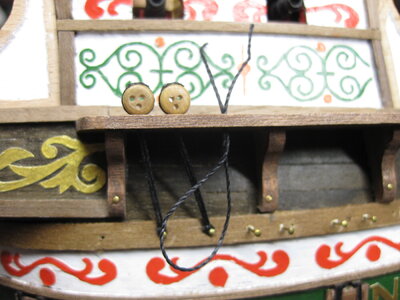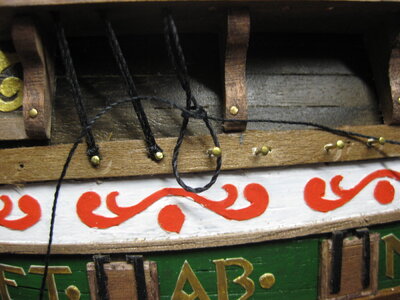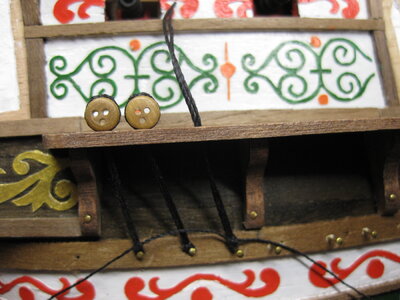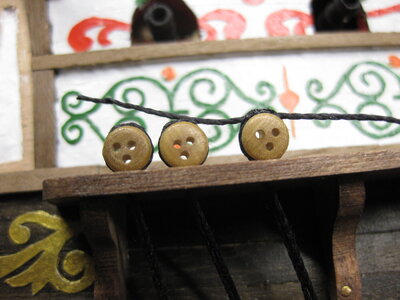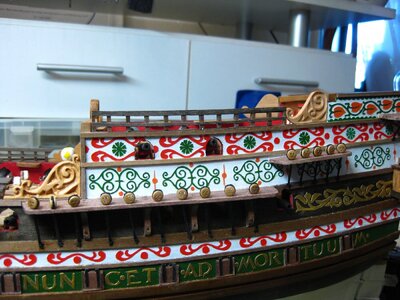Right ... back to the Haarlem.
I have mentioned that courtesy of
@pietsan Piet Sanders on Modelbouwforum that I have discovered a new way (or new to me at least) way of attaching the deadeyes to the chainplates and the hull. I first wanted to try it out, before posting anything, but now that I have done one, I can tell you it works like a charm!
View attachment 266581
The first step is to wrap the deadeye in rope as per normal (yes, you have read right - no more unsightly and ungainly brass wire that has to be twisted and soldered! In this case, I have used 0,5mm brown rope.
View attachment 266582
Next a piece of rope (Piet suggests 0,3mm) is attached to the rope directly underneath the deadeye ...
View attachment 266583
... and secured with a number of windings. In this case I have used 4 windings. This is important as you have to use the same number of winds on all deadeyes - that way they will stand at identical heights from the chainplate.
View attachment 266584
The two strands of rope are then simply inserted through the pre-drilled hole in the chainplate.
View attachment 266585
The two strands of rope are then lightly coated with white PVA glue and turned together to form a natural twist. You will keep on twisting until the rope is tight but not so tight that it distorts its shape. Now you simply wait a few minutes for the glue to bind the windings and with the glue still damp insert the twisted rope into the pre-drilled hole in the hull.
View attachment 266586
And all that is left is to secure the rope with a brass nail - the head of which can be blackened with a touch of black paint once fully inserted. And voila!
View attachment 266587
If there is a better or easier way to do this, I have yet to find it! Thanks Piet!
View attachment 266588
View attachment 266589
Now I can get moving on the rest of these.




